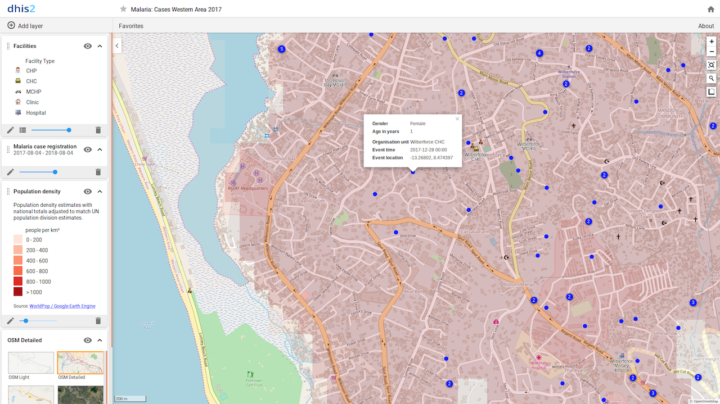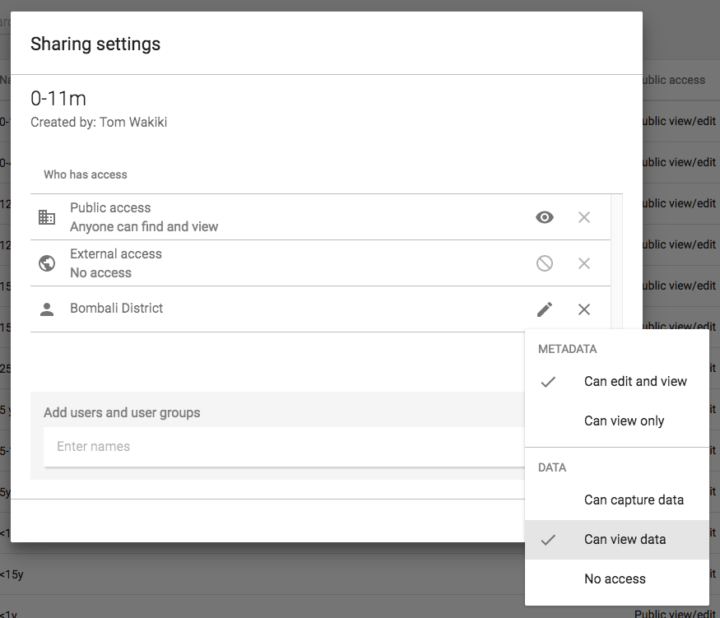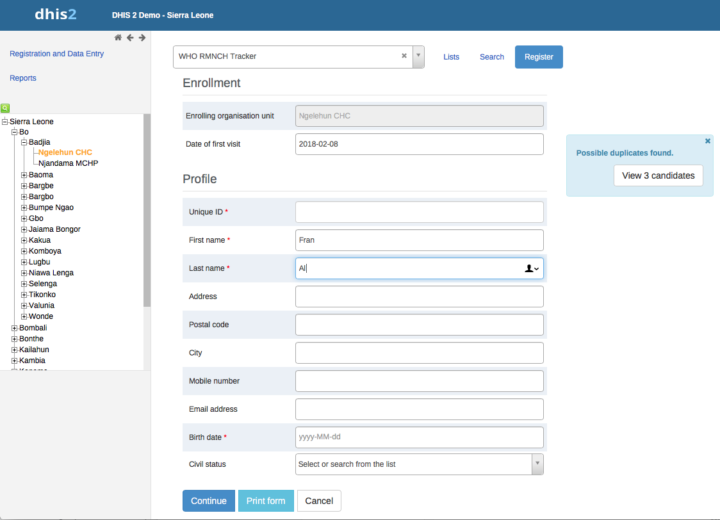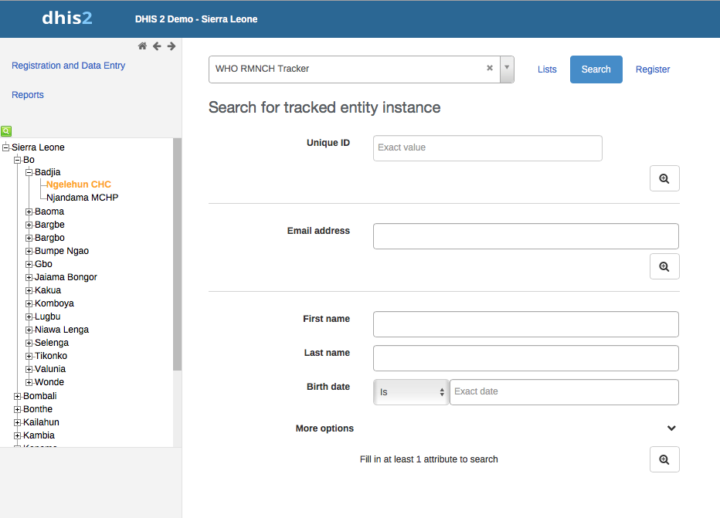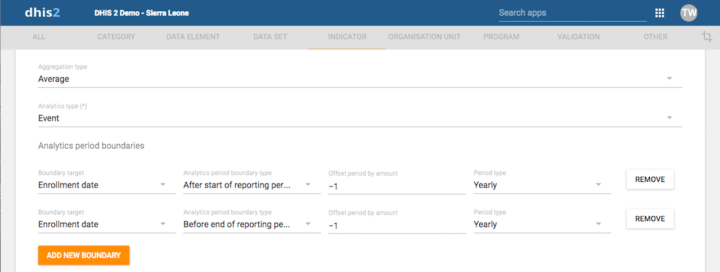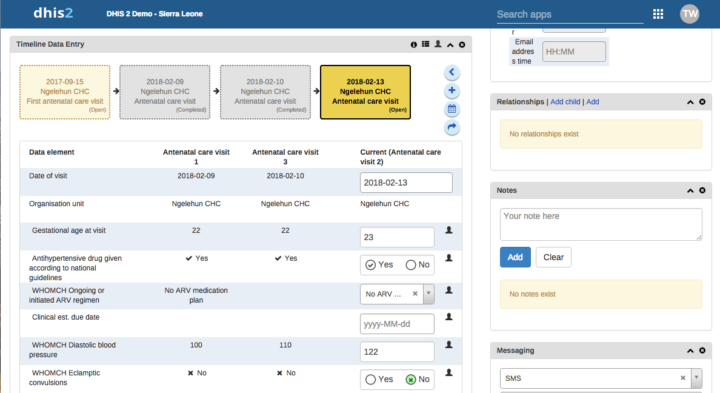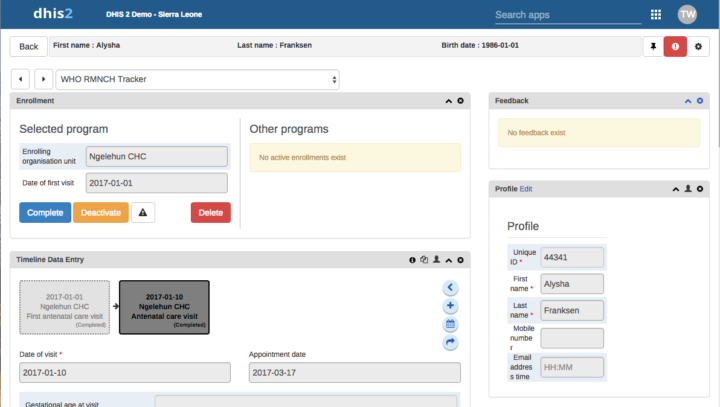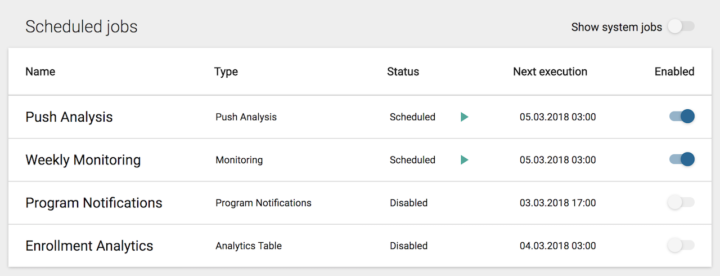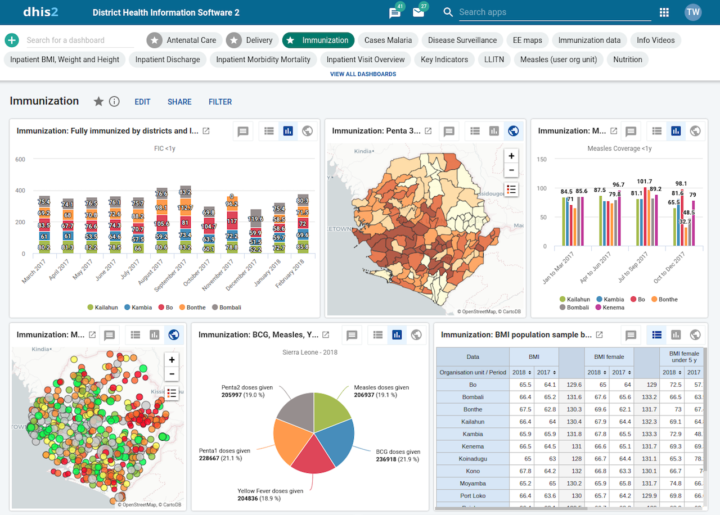
Dashboard app
A new dashboard app is now available which lets you arrange the dashboard items in a completely flexible way. It features better dashboard search, allows you to create shortcuts by marking dashboards as favorites, switch between visualization types such as pivot, chart and map and insert free-text items. Dashboards can be shared, translated and filtered.
[ Video ][ Demo][ Screenshot 1 | 2 ] ][Docs]
